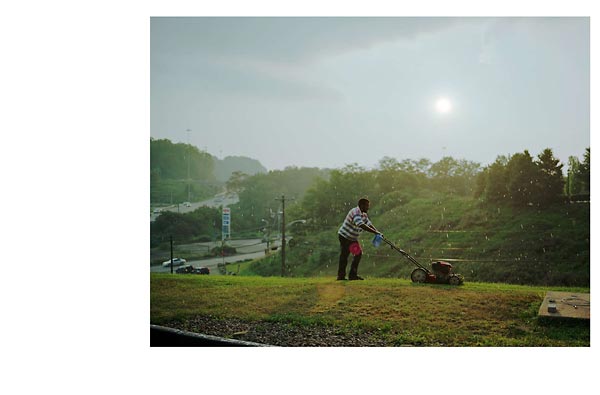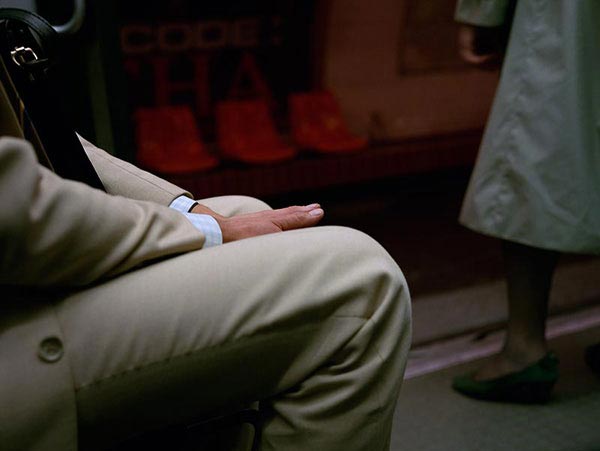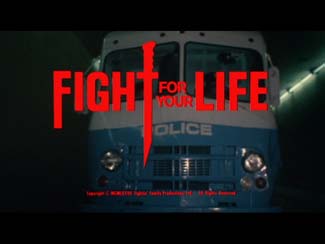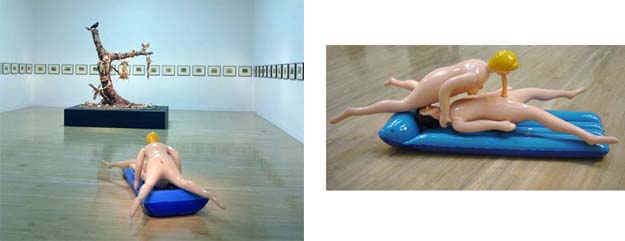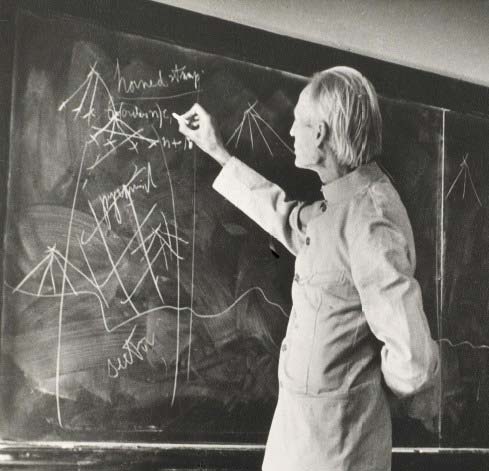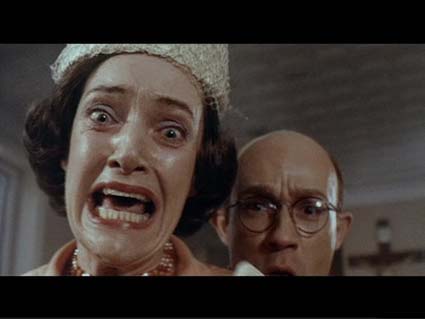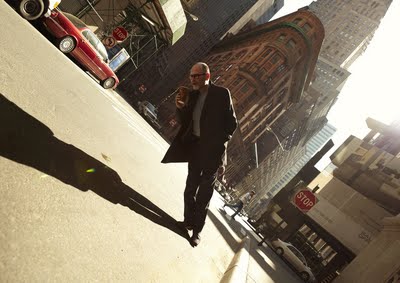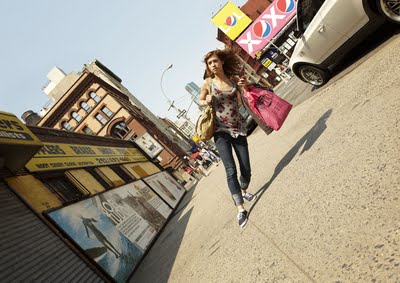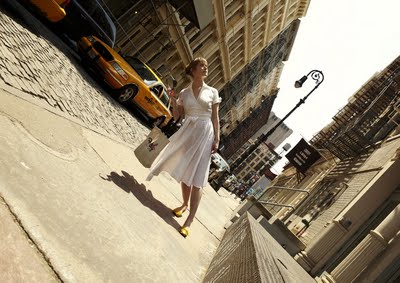Shimmy shimmy ya, shimmy shimmy yay
This is the primary misconception about placebos: that the placebo itself is somehow “working” to treat a medical condition. You can see it even in the headline for an otherwise well-crafted article that appeared in Wired last August: “Placebos Are Getting More Effective. Drugmakers Are Desperate to Know Why.” As internist and medical professor Peter Lipson noted on the Science-Based Medicine blog, placebos by definition have no medical effect. The “placebo effect” is due to the subject’s (and sometimes, the experimenter’s) expectation that a treatment will work. And, of course, a patient sometimes recovers simply due to chance or because his or her immune response handled the problem. Researchers observe an improvement, and this gets attributed to the placebo. In the case of the Wired article, the misconception in the headline is cleared up by the text of the report: The placebo effect may be getting stronger for reasons that are unclear to researchers. Placebos themselves, as ever, remain ineffective.
photo { Camilla Akrans }
Your first instinct when you pick up a boomerang may be to throw it like a banana
The problem with optimism is that it’s blatantly incorrect: we aren’t all above average in everything, things do not always get better, and we can’t always get what we want. The problem with realism is that by itself it is depressing, a demotivator that does not elevate.
As an altnernative to the Charbydis of Realism and the Scylla of Optimism, I present Stoicism, via Marcus Aurelius (Meditations, Book II, part 1):
Say to yourself in the early morning: I shall meet today ungrateful, violent, treacherous, envious, uncharitable men. All of these things have come upon them through ignorance of real good and ill… I can neither be harmed by any of them, for no man will involve me in wrong, nor can I be angry with my kinsman or hate him; for we have come into the world to work together.
Now, this at first seems rather banal: don’t sweat mean people. But this is actually quite important, because frustrations with people, not nature, causes most of our grief. Most of what causes people angst are not exogenous constraints of no one’s fault, but rather, when people do things that seemingly are intended to harm you: someone cuts you off in traffic, privately belittles your contributions to colleagues. Recognize there are things you can control, and those you can’t, and this include other people’s actions: learn the difference, and don’t worry about things you can’t control.
E-40 the bonzerelli, the ballatician from the Soyo block soil

A suburban high school student finds love (sort of) when his sleepy Louisiana town—and his plans to rob the grave of Adolf Hitler’s horse—gets rained on by Hurricane Katrina. A true story. (…)
The typical day consisted of us playing Super Smash Bros. on Nintendo 64 then walking to the gas station to get Icees. We’d sit sweating in front of the glass storefront, spinning the wise words only teenagers can.
“Man, this place sucks.”
“I know, dude.”
photo { Arnaud Pyvka }
‘As an object a book can sit around for years, resting comfortably on a library shelf, but as a text, it does not exist at all unless it is read, interpreted, understood.’ –D. G. Myers
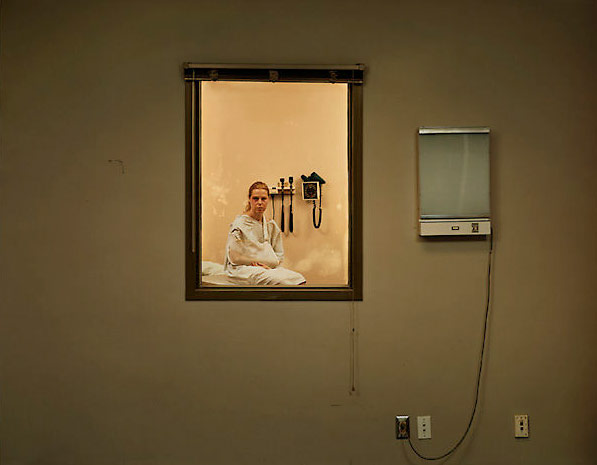
Obviously Lola was nuts with happiness and optimism, like all people on the good side of life, the ones with privilege, health, security, who still have a long time to live.
{ Céline, Journey to the End of the Night, 1932 | Continue reading }
photo { Taryn Simon }
Everyone knew that hotel was a goner, they broke all the windows, they took all the door knobs

Advances in technology have revealed that our brains are far more altered by experience or training than was thought possible. The memory-storing hippocampus region of the brain in London taxi drivers is bigger, and the auditory areas of musicians more developed, than average. Even learning to juggle can result in a certain amount of rewiring of the brain.
So the Lord Chief Justice’s suggestion that a lifetime spent on the internet will alter the way we think and process information is well founded. But whether these changes will enhance or degrade our powers of imagination, recall and decision-making has divided scientists.
Baroness Greenfield, director of the Royal Institution, was among the first to warn that today’s children may grow up with short attention spans and no imagination. Others suggest that the abandonment of books means people will lose the ability to follow a plot from start to finish. However, as yet little or no evidence has emerged to support these fears.
Short-term studies have, if anything, shown internet use to have a positive impact on our mental powers.
A study published this week, for instance, revealed that when “internet naive” adults carried out web searches every day for two weeks, it boosted the activity in brain areas linked to decision-making and working memory.
The reality is likely to be a trade-off: certain abilities will be enhanced at the expense of others. It could be that browsing through the vast quantities of information on the web leaves people better equipped to filter out the irrelevant and focus on the important.
Meanwhile, people may get worse at keeping the bigger picture in mind. Only a long-term psychological study will provide a definitive picture of how internet use affects cognition.
{ Times }
artwork { Peter Atkins, Last Fuel For 1000km, 2009 }
Light it up, let it cook, look in the mirror, let me crush

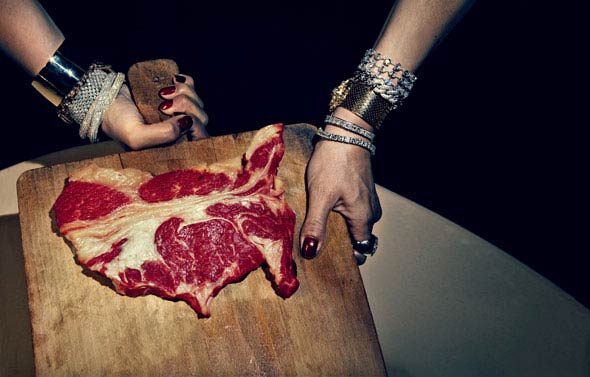
{ Linda Evangelista by Maurizio Cattelan, W magazine, Nov. 2009 | More photos | Behind the scene video }
related:
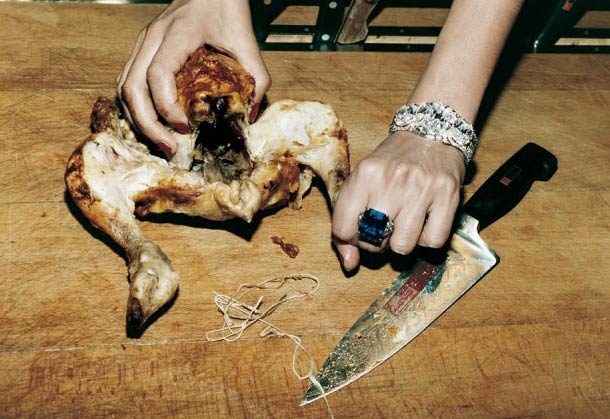
{ Helmut Newton, Allure magazine, 1997 }

{ Maurizio Cattelan | Bidibidobidiboo, 1996 | Him, 2001 | La Nona ora, 1999 | more }
Talkin’ transubstantiation, any version will do
I believe that puzzles are miniature models of the inner workings of the imagination and thus, in doing them, we gain insights into ourselves. This unconscious process is, in my view, what makes them so appealing — and frustrating at the same time, when the answer is not found. Self-knowledge is always its own reward. This is why when we do get the answer we feel that everything is right in the world; when we don’t, we get a sense of chaos and veritable angst. It is difficult to put aside an unsolved puzzle, isn’t it?
Sad girl, you’re such a naughty bad girl, beep-beep, uh-uh

In theory the one person we should never, ever, lie to is ourselves. Surely lying to ourselves is counter-productive? Like calmly and deliberately shooting yourself in the foot or taking a hot toasting fork and plunging it into your eye?
But look around and it’s not hard to spot the tell-tale symptoms of self-deception in other people. So perhaps we are also deceiving ourselves in ways we can’t clearly perceive? But is that really possible and would we really believe the lies that we ‘told’ ourselves anyway? That’s what Quattrone & Tversky (1984) explored in a classic social psychology experiment published in the Journal of Personality and Social Psychology. (…)
The study suggests is that for many people self-deception is as easy as pie. Not only will many people happily lie to themselves if given a reason, but they will only look for evidence that confirms their comforting self-deception, and then totally believe in the lies they are telling themselves.
artwork { Pietro Perugino, Mary Magdalene, c. 1500 }
Flash the burgers on your crewin’

{ We don’t bother to dry chives or parsley, since whatever tastes pleasantly herbaceous when fresh, intensifies into the flavor of sunburned grass clippings. Instead, we dry the oily herbs, like rosemary, sage, thyme, and lavender — and Thai basil, which is actually closer to mint than the Genovese variety and adds welcome floral notes to wintertime stir-fries. | Kerri Conan/NY Times | Continue reading }
Uh-oh, love comes to town

Optimists called the first world war “the war to end all wars”. Philosopher George Santayana demurred. In its aftermath he declared: “Only the dead have seen the end of war”. History has proved him right, of course. What’s more, today virtually nobody believes that humankind will ever transcend the violence and bloodshed of warfare. I know this because for years I have conducted numerous surveys asking people if they think war is inevitable. Whether male or female, liberal or conservative, old or young, most people believe it is. For example, when I asked students at my university “Will humans ever stop fighting wars?” more than 90 per cent answered “No”. Many justified their assertion by adding that war is “part of human nature” or “in our genes”. But is it really? (…)
A growing number of experts are now arguing that the urge to wage war is not innate, and that humanity is already moving in a direction that could make war a thing of the past.
Among the revisionists are anthropologists Carolyn and Melvin Ember from Yale University, who argue that biology alone cannot explain documented patterns of warfare. They oversee the Human Relations Area Files, a database of information on some 360 cultures, past and present. More than nine-tenths of these societies have engaged in warfare, but some fight constantly, others rarely, and a few have never been observed fighting. “There is variation in the frequency of warfare when you look around the world at any given time,” says Melvin Ember. “That suggests to me that we are not dealing with genes or a biological propensity.” (…)
Brian Ferguson of Rutgers University in Newark, New Jersey, also believes that there is nothing in the fossil or archaeological record supporting the claim that our ancestors have been waging war against each other for hundreds of thousands, let alone millions, of years.
War emerged when humans shifted from a nomadic existence to a settled one and was commonly tied to agriculture, Ferguson says. “With a vested interest in their lands, food stores and especially rich fishing sites, people could no longer walk away from trouble.” What’s more, with settlement came the production of surplus crops and the acquisition of precious and symbolic objects through trade. All of a sudden, people had far more to lose, and to fight over, than their hunter-gatherer forebears. (…)
Perhaps the best and most surprising news to emerge from research on warfare is that humanity as a whole is much less violent than it used to be (see our timeline of weapons technology). People in modern societies are far less likely to die in battle than those in traditional cultures. For example, the first and second world wars and all the other horrific conflicts of the 20th century resulted in the deaths of fewer than 3 per cent of the global population. According to Lawrence Keeley of the University of Illinois in Chicago, that is an order of magnitude less than the proportion of violent death for males in typical pre-state societies, whose weapons consist only of clubs, spears and arrows rather than machine guns and bombs.
There have been relatively few international wars since the second world war, and no wars between developed nations. Most conflicts now consist of guerilla wars, insurgencies and terrorism - or what the political scientist John Mueller of Ohio State University in Columbus calls the “remnants of war”. He notes that democracies rarely, if ever, vote to wage war against each other, and attributes the decline of warfare over the past 50 years, at least in part, to a surge in the number of democracies around the world - from 20 to almost 100.
photo { Terry Richardson, Nikki and Zoe, 1995 }
And then… Then you wake up… and it’s daylight…

In the early years of the “space race” (1957-1975) two men sought to test a scientifically simple yet culturally complicated theory: that women might be innately better suited for space travel than men. In 1960 the thought of a woman in space was a radical one, and justifiably so. On the ground 75% of American women did not work outside the home and females were banned from military flight service altogether. In marriage, wives were required to have their husband’s permission to take out a bank loan, buy property, or purchase large household goods such as a refrigerator. Despite the social odds, a Harvard-educated surgeon and a U.S. Air Force General sought to determine if, from a purely practical perspective, women were suitable for space flight.
The latest look at the intersection of physiology, spaceflight and politics is captured in a new article entitled “A Forgotten Moment in Physiology: The Lovelace Woman in Space Program (1960-1962),” written by Kathy Ryan, Jack Loeppky and Donald Kilgore.
photo { Katerina Jebb }
previously { How many people are in space right now? }
The steam was still coming out of my mouth but I wasn’t cold anymore

Why do people say “um” and “er” when hesitating in their speech?
This question can actually be split into two: why do people say anything at all while hesitating and why do they say “er” and “um” instead of other possible sounds?
To answer the first question, linguists known as conversation analysts have observed that people vocalise in a conversation when they think it is their turn to talk, and there are several ways of negotiating the taking of those turns. One of them is the relinquishing of a turn by the current speaker and another speaker taking the floor. Therefore, silence is often construed as a signal that the current speaker is ready to give up his or her turn.
So, if we wish to continue our speaking turn, we often need to fill the silences with a sound to show that we intend to carry on speaking. If we always thought out thoroughly everything we were going to say in a conversation, or memorised our lines perfectly there would be no hesitation at all. But, as it is, we do a lot of what is called local management, or improvisation, during conversation for many reasons not least because we cannot predict the reactions of our interlocutor. In order to keep the floor while we hesitate, we place dummy words in the empty spaces between our words, much as we might drape our coats on a seat at the cinema to prevent others from taking it.
The second question, as to why “er” and “um” are used instead of say, “ee” or “choo” is not as easy to answer.
“Er”, in British English, is a transcription of the phonetic schwa sound found in unstressed syllables of English words (such as the vowel sound in the first syllable of “potato”). In traditional phonetics this was called the neutral sound because it is the vowel sound produced when the mouth is not in gear, that is, not tensed to say any of the other formed vowels such as “e”. The “um” sound is more difficult to explain unless it is just a bad transcription of the same neutral sound with a consonant that closes the mouth in preparation for another real word.
{ NewScientist }
artwork { Kitagawa Utamaro }
‘I once wanted to become an atheist, but I gave up — they have no holidays.’ – Henry Youngman

{ Goya, Plate 39 from The Disasters of War, 1810-1820 }
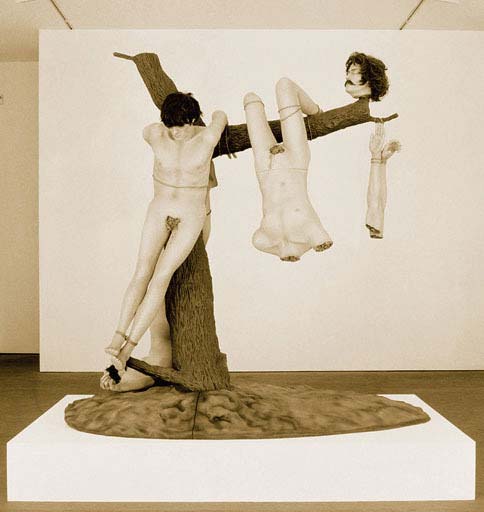
{ Jake and Dinos Chapman, Great Deeds Against the Dead, 1994 }
The Chapman brothers, fresh out of the Royal College of Art, had become obsessed with Goya’s gory ouvre - to the point, as Jake Chapman told me in a phone interview, that they later even considered changing their surname to Goya. They were especially haunted by the famous series of etchings known as “The Disasters of War”, in which Goya portrayed the atrocities he had witnessed in the Peninsular War between Spain and France (1808-1814) with a visceral horror. (…)
In 1994, they re-created plate 39 of “The Disasters of War - Great Feat! With Dead Men!” - on a larger scale, using nylon-wigged mannequins. Great Deeds Against the Dead (1994), which was their contribution to the legendary ‘Sensation’ exhibition at the Royal Academy, depicts three naked male bodies bound to a tree; blood dribbles from the crotches of these shop dummies where their genitalia would have been, if they’d ever had them. One victim’s arm dangles by its fingers from the makeshift gallows alongside the carcass of his torso, the severed head skewered on a branch.
{ Christopher Turner, editor at Cabinet magazine | Tate | Continue reading }



{ Jake and Dinos Chapman, Sex, 2003 }
With their bronze sculptures under the title “Sex” (2003), the Chapman brothers make a jump in time. They show the decomposed corpses from “Great Deeds Against the Dead” (1994). The bodies are swarming with flies, maggots, worms, and all sorts of creatures which have picked their bones clean. At first glance, everything seems naturalistic. It isn’t until one examines the work more closely and talks to the artists that one realizes the flies and worms were originally cheap plastic reproductions from toy stores and novelty shops. These were cast in bronze and hand-painted by the artists.
‘Not all smart people work at Sun.’ –Bill Joy

{ The hairy ball theorem of algebraic topology states that there is no nonvanishing continuous tangent vector field on the sphere. The theorem was first stated by Henri Poincaré in the late 19th century, and first proved in 1912 by Brouwer. | Wikipedia | Continue reading }
{ Luitzen Egbertus Jan Brouwer (1881-1966) was a Dutch mathematician and philosopher, usually cited as L. E. J. Brouwer but known to his friends as Bertus | Wikipedia | Continue reading }
You ain’t ringing the bell I’m ready when you are

It’s said that dogs sniff each other as a kind of canine equivalent to the human handshake; an otherwise meaningless “greeting ceremony” which reportedly started in medieval times as a way of checking the other guy for weapons.
But is it really just a social gesture? Does it have an adaptive purpose? (…)
We know that at least 33% of a dog’s brain is devoted to processing olfactory information whle in humans that figure is closer to about 5%.
Marc Bekoff wrote that “[a dog’s nose] can distinguish T-shirts worn by identical twins, follow odor trails, and are 10,000 times more sensitive than humans to certain odors.” (…) So if a dog’s nose can pick up information from yellow snow, from the fear that hangs in the air after another dog leaves an examination room, from scents left behind by the shoes of an escaped prisoner, or from lifting its nostrils to the wind, why would a dog need to stick his nose directly into another dog’s snout, genitals, and nether regions to garner social information? Couldn’t he do that at a “safer” distance? (…)
Dog trainer and natural philosopher Kevin Behan says it’s a way of grounding themselves. “Anytime there is … any change, any stimulus or stimulation, and especially when stressed, dogs need to smell something.”
related { Answers about exploring New York with your dog. }
The sudden decompression at 30, 000 feet is something you gotta see to believe

Scientists often have to make sacrifices for their work. Physicist Dominic Vella chopped his bathroom rug into strips, and L. Mahadevan’s coauthor ran off with his bookshelf. With these sacrifices, these two teams were able to glean enough information to revolutionize the world’s understanding about the physics of lumpy carpets.
Their results, set to be published in two separate papers in the latest issue of Physical Review Letters, describe everything about wrinkles in rugs– known also as rucks — including how they form, how they move, and what happens when they interact. (…)
First, Vella and his team tested rubber mats of different thicknesses on a variety of flat surfaces. After observing how a wrinkle in the rubber mat developed on wood, sandpaper and metal, the team compared it to the behavior of Vella’s own bathroom rug on the same surfaces. To see how these wrinkles move, the team used a high-speed camera to film the mats while a team member waved one end up and down.
photo { Rug by Gandia Blasco }
Back in the days drivin’ an Accord
Within a few years, e-mail and Twitter moved the art of letter writing to the trash bin. And in an age when all psychic life is being understood in terms of neurotransmitters, the art of introspection has been become passé. Galileos of the inner world, such as Soren Kierkegaard (1813-1855), have been packed off to the museum of antiquated ideas. Yet I think that the great and highly quirky Dane could help us to retrieve a distinction that has been effaced.
These days, confide to someone that you are in despair and he or she will likely suggest that you seek out professional help for your depression. While despair used to be classified as one of the seven deadly sins, it has now been medicalized and folded into the concept of clinical depression. If Kierkegaard were on Facebook or could post a You Tube video, he would certainly complain that we, who have listened to Prozac, have become deaf to the ancient distinction between psychological and spiritual disorders, between depression and despair. (…)
While Kierkegaard would have agreed that happiness and melancholy are mutually exclusive, he warns, “Happiness is the greatest hiding place for despair.”
related { Kierkegaard, Metaphysics and Political Theory }


